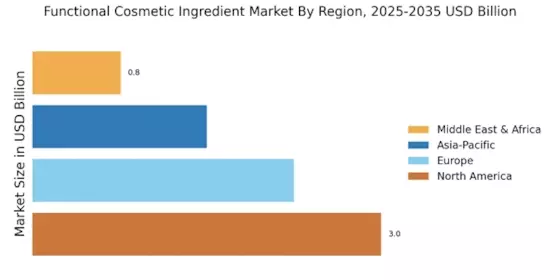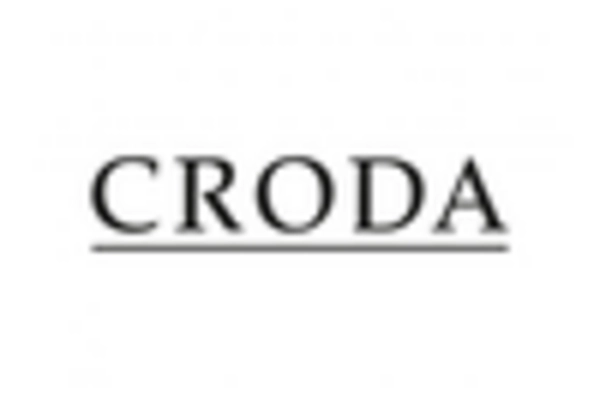Increasing Consumer Awareness
The rising awareness among consumers regarding the ingredients in cosmetic products appears to be a pivotal driver for the Functional Cosmetic Ingredient Market. As individuals become more informed about the potential effects of various chemicals, there is a noticeable shift towards products that contain functional ingredients known for their benefits. This trend is reflected in the market data, which indicates that the demand for products with natural and effective ingredients has surged, with a projected growth rate of approximately 8% annually. Consumers are increasingly seeking transparency in product formulations, which compels manufacturers to innovate and incorporate functional ingredients that align with consumer preferences.
Demand for Anti-Aging Products
The increasing demand for anti-aging products is a notable driver for the Functional Cosmetic Ingredient Market. As the global population ages, there is a heightened interest in products that offer anti-aging benefits, leading to a surge in the incorporation of functional ingredients such as peptides, antioxidants, and hyaluronic acid. Market analysis suggests that the anti-aging segment is expected to grow at a compound annual growth rate of 7% over the next five years. This trend indicates that consumers are willing to invest in products that promise visible results, thereby propelling the demand for functional ingredients that cater to these needs.
Sustainability and Ethical Sourcing
Sustainability and ethical sourcing are becoming critical drivers for the Functional Cosmetic Ingredient Market. Consumers are increasingly prioritizing products that are not only effective but also environmentally friendly and ethically sourced. This trend is reflected in market data, which shows that brands emphasizing sustainable practices are experiencing higher sales growth, with a notable increase in consumer loyalty. The market for sustainable cosmetic ingredients is projected to grow by 9% annually, as consumers demand transparency in sourcing and production processes. This shift towards sustainability compels manufacturers to innovate and adopt functional ingredients that align with eco-friendly practices, thereby enhancing their market position.
Rise of Personalization in Cosmetics
The trend towards personalization in cosmetics is reshaping the Functional Cosmetic Ingredient Market. Consumers are increasingly seeking products tailored to their specific skin types and concerns, which necessitates the use of functional ingredients that can address diverse needs. This shift is supported by market data indicating that personalized beauty products are projected to capture a significant share of the market, with an expected growth rate of 10% annually. As brands strive to meet these personalized demands, the incorporation of functional ingredients that provide targeted benefits becomes essential, thereby driving innovation and expansion within the industry.
Regulatory Support for Natural Ingredients
Regulatory bodies are increasingly endorsing the use of natural and functional ingredients in cosmetics, which significantly influences the Functional Cosmetic Ingredient Market. This support is evident in the establishment of guidelines that promote the safety and efficacy of natural components. For instance, regulations that favor the use of botanical extracts and other functional ingredients are likely to enhance market growth. The market is projected to reach a valuation of USD 15 billion by 2027, driven by the favorable regulatory landscape that encourages manufacturers to adopt safer, more effective formulations. This regulatory environment not only boosts consumer confidence but also incentivizes innovation in ingredient sourcing.


















Leave a Comment